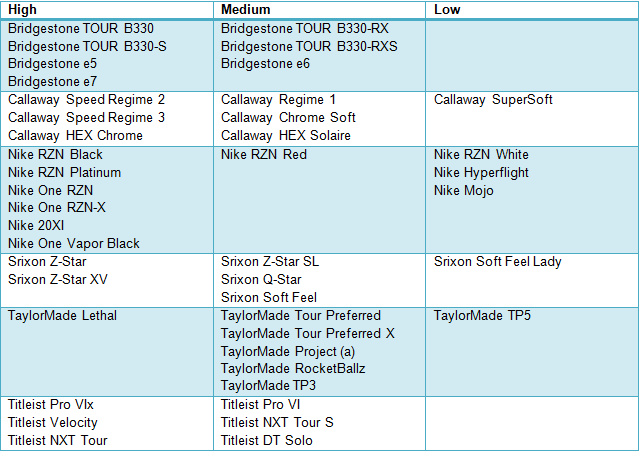
There’s a special relationship between a golf ball and your golf club.
Without getting too technical, golf balls are designed to react to club heads traveling at certain speeds. Manufacturers engineer a wide variety of golf balls and picking the right one can be a challenge. Rest easy, the LostGolfBalls team is here to help.
First and foremost, all golf balls aren’t created equal. The key to picking the right one begins with knowing the speed limit – your swing speed limit that is. Doing our best Neil deGrasse Tyson impersonation, let’s dig a little deeper into the science of the swing to tell you why.
When you hit a golf ball, it slightly deforms. Check out the mesmerizing video below:
During impact, kinetic energy is transferred and stored as the golf ball tries to regain its original shape. This is called the “coefficient of restitution” (or COR) which is a measurement of energy loss or retention when two objects collide. To gain optimal distance, a golfer needs to play a ball that maximizes restitution for his or her specific swing speed which ranges from fast (105 mph and above), medium (85 to 104 mph) or slower (84 and below).
Next you’ll hear the term “compression” which is simply the measurement of how much the ball flattens against the clubface at impact. This is also important. If a ball is too soft, too much energy will be spent deforming and not enough will be stored. Similarly, if a ball is too hard, it won’t deform enough and the transfer of energy will be lost.
To help, here’s a chart of high-, medium-, and low-compression golf balls:

Average Drive Distance ÷ 2.3 = Swing Speed. Knowing your swing speed is vital to selecting the right golf ball and, in return, getting the biggest bang for your buck. For each mile-per-hour of club speed, a golf ball travels roughly 2.3 yards. With that in mind, here’s a simple equation to help you figure out your swing speed:
 Image Source: www.thealisonmarieblog.com
Image Source: www.thealisonmarieblog.com
As a general rule of thumb, the higher your swing speed the higher compression golf ball you’ll want to play. After all, the faster you swing, the more you compress it. In the words of Ron Burgundy, “It’s science.”

